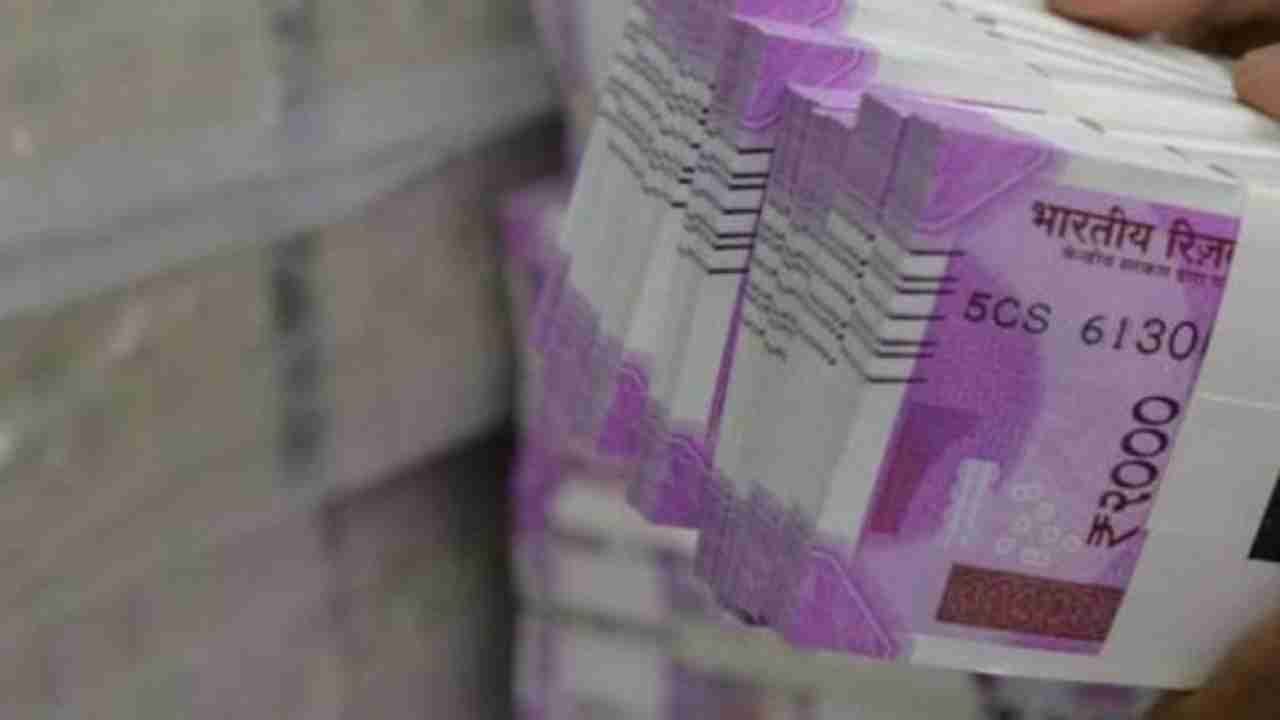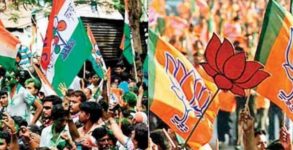Even as the Covid-19 pandemic continues to hurt livelihoods across India, the country’s government, led by prime minister Narendra Modi, has been reluctant to widen its direct cash transfer programme to rescue those in need.
This reluctance is despite the fact that many large economies have benefitted from putting money directly in the hands of people, and several renowned economists, including former Reserve Bank of India governor Raghuram Rajan, have been asking the Indian government to initiate similar direct cash transfer measures.
If we look at International Scenario, The US government recently passed a $1.9 trillion (Rs 138 lakh crore) stimulus package, which includes delivering cheques of $1,400 to American families and $300 per week unemployment insurance. Similar measures could have great benefits in India as thousands of people who have been affected by the pandemic-related lockdowns are daily wagers who work in unorganised sectors and live hand-to-mouth.
Covid-19 stimulus package:
India’s Covid-19 stimulus package as a percentage of its GDP is currently at around 10%, which is way lower than several other major economies.
In comparison, the US is spending around 27% of its GDP on economic relief, and in Japan, the stimulus is now at 55% of the country’s GDP.
The Indian government had announced a stimulus package worth Rs20 lakh crore in May 2020. Of this, Rs1.7 lakh crore was directly targeted towards farmers, women, and construction workers. Also, the funds that the government promised to transfer directly to the needy were merely a reallocation of the regular annual schemes that offer cash benefits.
Adding to the woes of the poor, the implementation of the direct transfers was riddled with errors and limitations. A huge section of migrant workers was left fending for itself during the first wave because it wasn’t covered under any direct benefit transfer schemes in the source or destination states. Many who might have been part of the beneficiary database did not have the right Aadhaar linkages.
The reasons why the government may be shying away from widening the ambit of direct cash transfers could be its mounting fiscal deficit. Indian government’s revenues have shrunk drastically, leading to the country spending more than what it earns.
But this may not be the time to prioritise fiscal prudence. In fact, direct cash relief could also provide a stimulus to India’s slowing economy by firing up consumption. The deceleration in consumption growth over the last five years is a result of lack of jobs, rural distress and growing inequality.
For the Indian economy there are two major engines for growth — consumption and investment. Exports are not really our forte and can supplement though never lead growth. Government spending, though important, can be inflationary. Therefore the importance of consumption has to be underlined.
In fact the demographics of the country indicate that there is potential for people to move up the income chain thus leading to enhanced consumption. As long as there is upward mobility the pace of consumption will continue.
Let us look at the numbers. As per the latest data from CSO, private final consumption expenditure (PFCE) accounts for 57 per cent of GDP and hence is the leading sector. Growth in PFCE at current prices has slowed down from an average annual growth rate of 15.7 per cent during 2009-10 to 2013-14 to 11.9 per cent in the 2014-15 to 2018-19 period. This is quite a sharp drop and the near stagnation in this growth rate calls for introspection.
The economic fallout of the pandemic will have ramifications on India’s consumers and “negatively impact” household consumption in 2021 as well, according to a report by The Boston Consulting Group (BCG).
In the current fiscal, consumption is seen down 10-12%, reaching pre-Covid-19 levels only by 2022. Household consumption includes expenditure on food and grocery, housing and household products, transport and communication, health, and education.
The level of inequality has increased in the country which has led to saturation in consumption standards. This is the classic Piketty situation where growth in the last few years has tended to get concentrated at the higher levels where incomes especially from capital has increased sharply thus exacerbating the difference between the lower and higher income levels.
This is important and needs further investigation. If growth is not evenly distributed then due to saturation of demand at the higher levels of income there is an impasse. Income levels must increase at the lower levels too so that consumption takes place at a steady pace.
Need for NYAY:
In the current economic scenario, the Congress’ proposed NYAY (Nyuntam Aay Yojana) scheme where ₹72,000 per annum is promised for the poorest 20 per cent households, can boost spending as was case with MGNREGA scheme that helped to an extent in boosting consumption of non-staples as this was additional income received that was used for higher value consumption food articles as well as discretionary spending. Such a direct push can be the immediate stimulus. In the normal course it would take a few years for the consumption cycle to pick up and real economic growth is a pre-requisite where adequate jobs are created so that purchasing power is generated. Therefore, the consumption led growth story will be gradual and circular with higher growth leading to more employment and income which spurs consumption which in turn fosters growth. This would be the circle of growth in the next five years.
The Indian economy has been contracting since the last few quarters even before Covid-19 came. The lockdown due to Covid-19 resulted in further contraction of up to 23.9 per cent in GDP. In my opinion, the economy will be in a better position only when end consumers will spend more, but right now consumers are spending money more rationally because millions have lost their jobs and million others are in constant fear of losing their job anytime.
It is like a cycle which has hit the pause button. To continue the cycle, it is important to increase the demand and increase the purchasing power of consumers at the same time by giving money directly to the people or indirectly by creating jobs, so they can start spending money on things which are less essential. It took two to three years for the economy to crash this bad and certainly it will take more time to get back on track.
In a situation where income inequalities have been continuously rising rapidly in the country, the exploited poor at the bottom definitely need a minimum income urgently. The minimum income guarantee scheme of the Congress party is definitely desirable. It gives the poorest a relief from extreme deprivation in the present high unequal society.
But this should not mean doing away with ongoing subsidies and schemes like MGNREGA, NFSA (National Food Security Act) and schemes that help the poor access work, education and health. These ongoing schemes ensure employment to all at the bottom, meaning productive use of the labour of the poor and also improves their access to basic needs.
There are two major means for funding this new scheme: (a) The tax/GDP ratio in India is very low and also the contribution of direct taxes in taxation. There is an urgent need to increase the rates of direct taxes like wealth tax, capital gain tax and also income tax. Only one of the taxes, the wealth tax if designed well can generate enough revenue for the new scheme, (b) the government can also reduce the huge funds going to the corporate sector in the forms of subsidies and incentives.
Identification of the poor is always a complex issue in India. However, in the given situation, the government can use the ranking of the households done under the SECC survey. The rankings can be quickly revised by gram sabhas organised under the sarpanch’s chairpersonship and the supervision of the local officials from the village and the concerned block.
As mentioned above, the minimum income scheme and the schemes for education and health are not mutually exclusive. Both the types of schemes have specific advantages and both should run simultaneously. The poor at the bottom do deserve this.
Former PM Dr. Manmohan Singh said the Congress’ NYAY scheme (of minimum income for poor) would usher in a new model for social welfare and prudent economics, as economic benefits will give rise in consumption levels results in kickstarting economic growth.
He further asserted that “spending 1.5 per cent of GDP for 20 per cent of the population is absolutely fair and just. The Congress party is also committed to fiscal discipline. Our nearly USD 3 trillion economy has the fiscal capacity to absorb this expenditure.”
Contrary to many suggestions of fiscal irresponsibility driving the scheme, including by the vice-chairman of the NITI Aayog, the Congress’s proposed scheme is not particularly ambitious in terms of size and affordability. Indeed, given an Indian GDP of around Rs 188 lakh crore in 2018-19, the bill of Rs 3.6 lakh crore as a proportion of GDP is just around 1.9%. This, to recall, is an upper bound on the correct estimate. Something a little less than 2% of GDP which is aimed at providing a wholly non-trivial cushion to those in deep income poverty is scarcely a fiscally irresponsible intervention. To the contrary, it should be welcomed as a long-overdue measure of rectification of the morally outrageous levels of income-poverty and income-inequality to which this economy has been witness.
In a paper titled “The Inequity of Money-Metric Poverty in India” by D Jayaraj / S Subramanian, it was pointed out that from 2005-06 to 2013-14, the average annual ratio of ‘revenue forgone’ (which is a measure of exemptions and concessions attracted by direct and indirect taxes) to GDP was of the order of 6.45%. This is mainly assistance to corporate and business interests. Nary a word of criticism has been levelled against support for the rich, while a prospective programme of a vastly more modest support for the poor is met with the charge of violating fiscal discipline.
According to Raghuram Rajan, if implemented properly the Congress’s minimum income guarantee scheme can “revolutionise things”. He further added that “There are ways of structuring the scheme in a way that it creates growth at the grassroots level. It will allow people to make financial decisions on their own. We have a chance to target poverty alleviation effectively. If done effectively it [NYAY scheme] can change how things are run”.
Given the current economic crisis, it is high time that the Modi government should look for alternatives to stabilise the economy. The demonetization and hasty implementation of GST has already added fuel in the past. Now if the economy needs support than there is urgent need for reforms. The direct cash in the hands of poor will definitely increase the purchasing power resulting in increase in consumption and demand further resulting in giving economy the needed push. The government should come forward and holds discussion with all the stakeholders and find the best solution. If there is one thing a nation and its government need in times of such intense, multiple and intertwined crises, it is political space and confidence. It needs a reality check internally on whether it has created the best possible environment for itself to deal with these issues. Or, is it so deluded by Modi’s cast-in-titanium image that it couldn’t care less?
The views expressed above are author’s own.


















